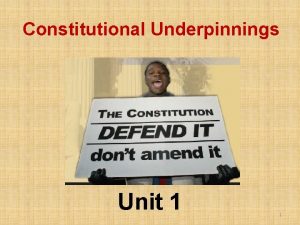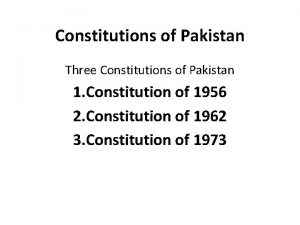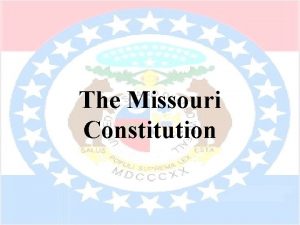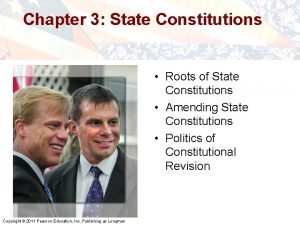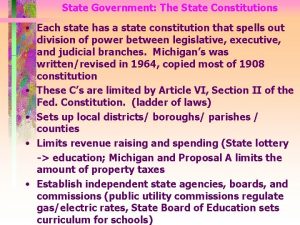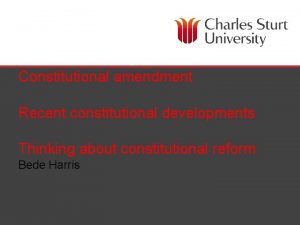State Constitutions State Constitutions Constitutional government in America






- Slides: 6

State Constitutions

State Constitutions Constitutional government in America began with colonial charters long before the United States Constitution. Since 1776, the 50 states have had a total of 146 constitutions. Only 19 states have kept their original documents, and all of the states have added amendments. All state constitutions divide the state government into three branches: legislative, executive, and judicial.

Why are state constitutions important? 1. They create structure for state government. Separation of powers among the three branches. 2. They establish different types of local government, such as counties, townships, municipalities, special districts, parishes or boroughs. They define powers and duties as well as the organization of these. 3. They regulate the way state and local governments can raise and spend money. For example, in many states the constitution limits the taxing power of the local government. 4. They establish independent state agencies, boards and commissions that have power in areas that affect citizen’s lives directly. For example, public utility commissions that regulate gas, board of education, etc.

Little countries? If you look up “state” in the dictionary, one of the definitions will sound a lot like the definition for “country. ” That’s because state is another word for country or nation. A state is a political unit that has the authority to govern itself. The United States is a group of states that decided to unite themselves under a single government. When states do that, they are not considered countries. And yet… they have their own governments. And they have their own power. The Constitution treats states partly as if they were independent countries and partly as small units within one big country. It lets states have power to do a lot of things, but it gives some powers only to the federal government.

Rule of Thumb Laws at a higher level of government are always superior to laws at a lower level if the laws conflict with each other.

Everybody’s got rights State constitutions also contain many of the same rights and guarantees you see in the U. S. Constitution. The U. S. Constitution is the supreme law of the land cannot be violated. That means state constitutions cannot give state citizens fewer rights than the U. S. Constitution gives. However, state constitutions can guarantee more rights than the U. S. Constitution does. For example, a state constitution might give more protection for a right that is also in the U. S. Constitution. A state constitution might also include additional rights that are not found in the U. S. Constitution. Finally, a state constitution might include rules about things that are unique to that state, such as how the state’s natural resources should be preserved.


